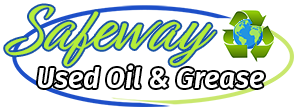The Life (and Afterlife) of Cooking Oil
September 28, 2021
All cooking oil goes through the same general lifecycle, from initial production all the way through use, recycling and reuse.
What exactly does this lifecycle of cooking oil look like, and how does cooking oil recycling work?
Here’s a quick overview of the process:
- Production and sale: Cooking oils are made in a wide variety of forms from a wide variety of resources. Industry estimates place the amount of cooking oil produced per year at approximately 13 million metric tons—an absolutely massive amount of oil that shows just how much it’s relied upon both in homes and in the food service industry.
- Oil is used and consumed: Cooking oil is used in many different cooking processes, both at home and at restaurants. It’s also an ingredient in common foods like bread, cake and ice cream.
- Any leftover oil is stored or reused: Cooking oils cannot be poured down the drain for disposal because they will congeal and block the drain; therefore, most people either will reuse the oil or store it away for safe disposal later.
- The oil is disposed of: After being stored for some time, the oil will be disposed of. For most people in their homes, this means throwing the hardened oil in the trash. Commercial properties will generally work with a cooking oil recycling service to come and get their grease.
- The oil is transported: UCO (used cooking oil) companies bring their trucks to collect the oil and then take it back to recycling centers for processing. Approximately 4.4 billion gallons of UCO are collected every year from restaurants and commercial kitchens.
- The UCO is heated and separated: The first step in processing UCO is to have it be filtered through a very fine screen to have its particles removed. Afterward, it gets sent into an evaporator and heated up, which separates the oil from the water content.
- The UCO goes through further separation: After the UCO passes through the evaporator, the oil will be put through a centrifuge to further separate the oil. The oil will be separated off the top, while any sediment still remaining in the oil remains at the bottom for disposal.
- The UCO settles: After the centrifuge process is complete, the remaining oil in the UCO settles to the bottom for collection. At this point the oil is as close to new as it’s going to get and can be safely reused.
- The UCO is used for other purposes: UCO can be used for a variety of other purposes and commodities, such as biofuel, biodiesel, cosmetics, soaps, animal feed and a wide range of other purposes for various industries.
This should give you a general idea of the lifecycle of cooking oils. For more information about the recycling of used cooking oil and what you should know about working with a professional UCO recycling company, contact our team at Safeway Used Oil and Grease with any questions you have for us.
Categorised in: Cooking Oil Recycling
